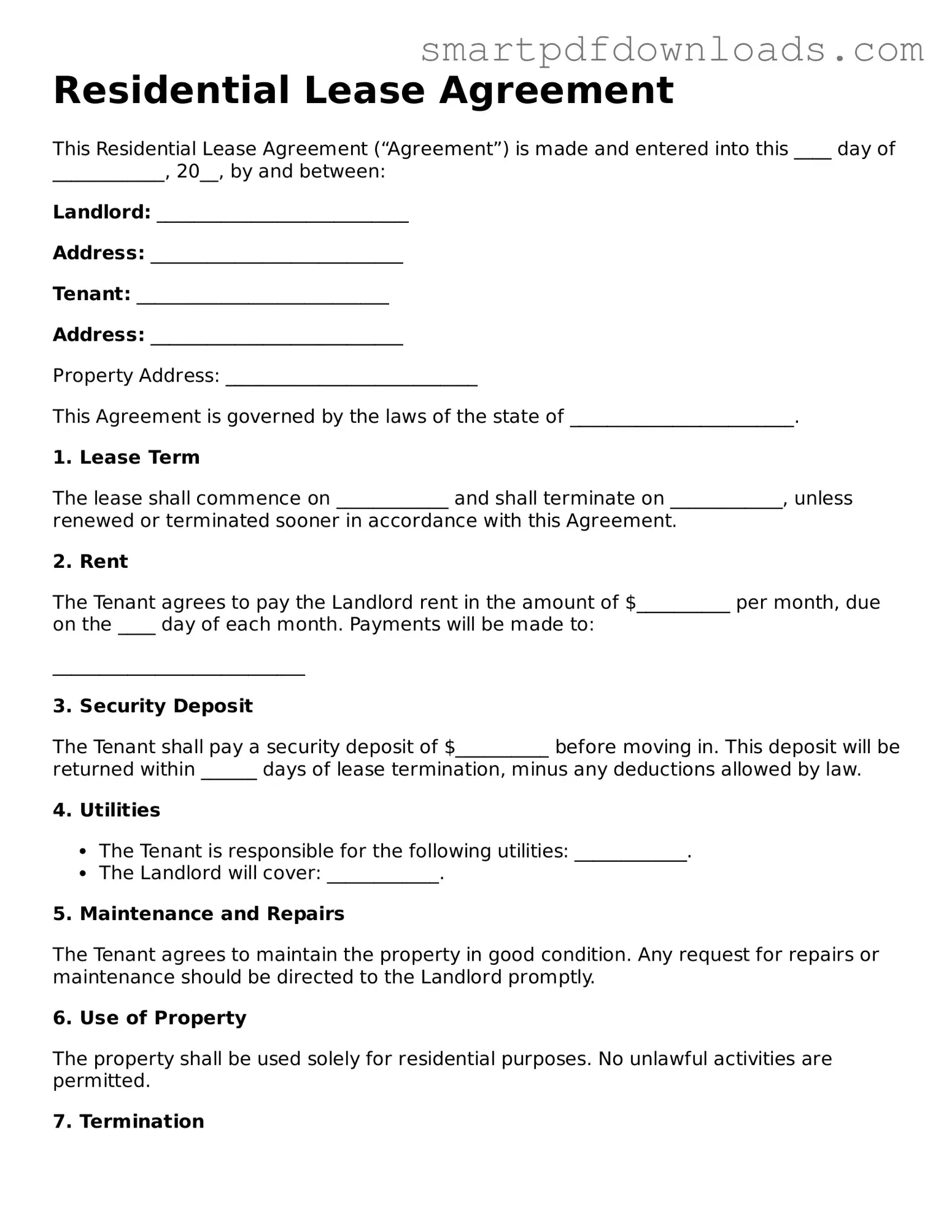Residential Lease Agreement
This Residential Lease Agreement (“Agreement”) is made and entered into this ____ day of ____________, 20__, by and between:
Landlord: ___________________________
Address: ___________________________
Tenant: ___________________________
Address: ___________________________
Property Address: ___________________________
This Agreement is governed by the laws of the state of ________________________.
1. Lease Term
The lease shall commence on ____________ and shall terminate on ____________, unless renewed or terminated sooner in accordance with this Agreement.
2. Rent
The Tenant agrees to pay the Landlord rent in the amount of $__________ per month, due on the ____ day of each month. Payments will be made to:
___________________________
3. Security Deposit
The Tenant shall pay a security deposit of $__________ before moving in. This deposit will be returned within ______ days of lease termination, minus any deductions allowed by law.
4. Utilities
- The Tenant is responsible for the following utilities: ____________.
- The Landlord will cover: ____________.
5. Maintenance and Repairs
The Tenant agrees to maintain the property in good condition. Any request for repairs or maintenance should be directed to the Landlord promptly.
6. Use of Property
The property shall be used solely for residential purposes. No unlawful activities are permitted.
7. Termination
Either party may terminate this Agreement by providing written notice at least ____ days prior to the intended termination date.
8. Governing Law
This Agreement will be governed by the laws of the state of ________________________.
9. Signatures
By signing below, both parties agree to the terms outlined in this Lease Agreement:
Landlord Signature: ___________________________ Date: ____________
Tenant Signature: ___________________________ Date: ____________
